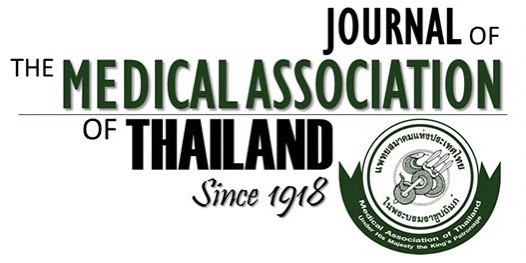Xerostomia, Hyposalivation, and Oral Microbiota in Type 2 Diabetic Patients: A Preliminary Study
Siribang-on Piboonniyom Khovidhunkit DDS, DMSc*, Tongchat Suwantuntula DDS*, Soisiri Thaweboon DDS, PhD**, Somsak Mitrirattanakul DDS, PhD***, Umawadee Chomkhakhai DDS, MSc****, Weerapan Khovidhunkit MD, PhD*****
Affiliation : * Department of Hospital Dentistry, Faculty of Dentistry, Mahidol University, Bangkok, Thailand ** Department of Microbiology, Faculty of Dentistry, Mahidol University, Bangkok, Thailand *** Occlusion Unit, Faculty of Dentistry, Mahidol University, Bangkok, Thailand **** Anandamahidol Hospital, Lopburi, Thailand ***** Department of Medicine, Faculty of Medicine, Chulalongkorn University and King Chulalongkorn Memorial Hospital, Bangkok, Thailand
Background and Objective : Mouth dryness is one of the major problems that can lead to several oral diseases
such as dental caries, periodontitis and oral infection. Mouth dryness has also been associated with type 2
diabetes mellitus (DM). The objective of the present study was to investigate the prevalence of xerostomia
(feeling of mouth dryness), hyposalivation (the reduction of saliva), and oral microbiota in Thai patients with
type 2 DM.
Material and method: One hundred and fifty-four ambulatory patients with type 2 DM and 50 non-diabetic
control subjects were interviewed for symptoms of xerostomia. The medical records of these subjects were
reviewed for pertinent medical history and laboratory investigations regarding their diabetic control. Oral
examination and measurement of hyposalivation using a modified Schirmer test (MST) were performed. The
presence of oral microbial flora was investigated using a modified dip-slide test.
Results : The prevalence of xerostomia was 62% in patients with type 2 DM compared with 36% in the non-
diabetic control group (p = 0.001). The prevalence of hyposalivation (defined as MST values < 25 mm at 3
min) was 46% in the patient group, whereas only 28% of the control group had hyposalivation (p = 0.03).
Patients with hyposalivation had significantly higher numbers of mutans streptococci, Lactobacillus spp., and
Candida spp. in the saliva compared with those without hyposalivation.
Conclusion : These results suggested that xerostomia and hyposalivation were prevalent in patients with type
2 DM and were associated with higher numbers of oral pathogens in the saliva.
Keywords : Xerostomia, Hyposalivation, Type 2 diabetes mellitus, Modified Schirmer test, Mutans streptococci, Streptococcus mutans, Lactobacilli, Lactobacillus, Candida



